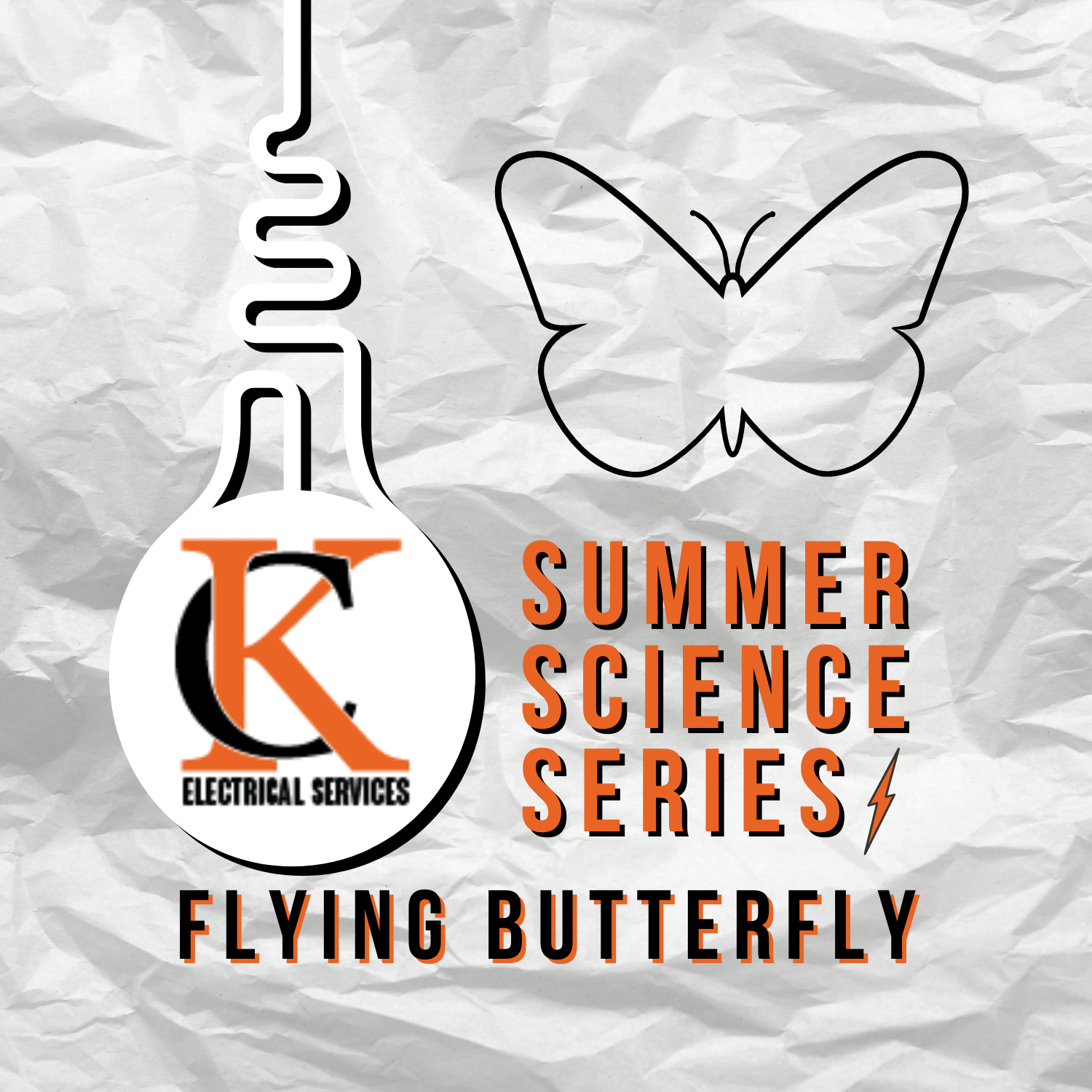Summer Science Series: Flying Butterfly
This project has a secret bonus!
You’ll need a balloon, so buy a bag of water balloons and cool off with the rest!
Summer is in full swing and it’s hot outside! This week’s shocking science experiment will keep you nice and cool indoors and even has a secret bonus. Since you’ll only need one balloon, you might want to grab a bag of water balloons and then you can use the extras to cool off with a water fight afterwards! First, let’s use static electricity to make a butterfly’s wings flap (with that water balloon we mentioned above)! Pretty snazzy if we do say so ourselves! Let’s get started.
You’ll need:
1 piece of cardboard
2 pieces of tissue paper
1 piece of cardstock paper
A pencil (markers for decorating are optional)
Scissors
A pair of googly eyes
1 balloon (any size)
A glue stick
Directions:
Step 1. First we’ll need to make the base for our butterfly by squaring up our cardboard. It doesn’t really matter what size your cardboard is, 8” x 8” is great.
Step 2. Next, use your pencil to draw butterfly wings on your tissue paper (think two large number 3s on the outside connected in the middle). Your wings will need to be smaller than your cardboard. If you’re using an 8”x8” cardboard square aim for 7” x 7” or so. Cut them out and place them onto your cardboard but DO NOT glue them yet!
Step 3. Use your cardstock paper and cut a butterfly body. (Think of the number 8 for shape.) Glue your body down the middle of your butterfly wings and overlapping it onto your cardboard. Again, DO NOT glue the tissue paper wings down. You will want the wings loose in order to fly but the body on top of the wings and cardboard.
Step 4. Glue your googly eyes down onto your butterfly body and give it some character with your pencil, maybe antennae?
Step 5. Blow up your balloon and tie it. Water balloons work great but any size balloon will do.
Step 6. Rub your balloon back and forth in your hair to give it an electric charge. Now hold the balloon on top of your butterfly, close but not touching it. Ta dah! The wings will raise and lower as you move the balloon closer and farther away.
What’s that got to do with electricity? When we charged the balloon by rubbing it in our hair the electrons were lost from our hair and gained by the balloon (giving it the static ‘charge’). Then when the negatively charged balloon gets close to the positively charged tissue paper wings the wings lift up because they are attracted to the negative charge!
We hope you enjoyed the project!
